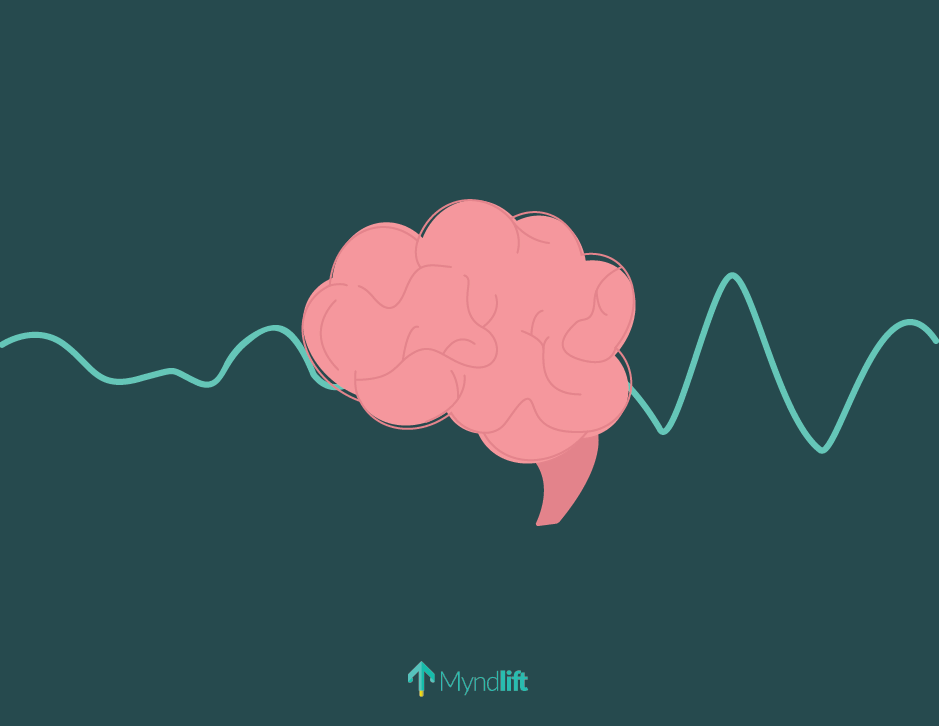Inside your brain, there's an orchestra. Synchronized electrical pulses from communication between billions of neurons produce neural oscillations commonly known as brainwaves. And just like different musical notes in a symphony, these brainwaves can cohere in synchronized harmony, often resulting in your optimal mental health state.
There are low-frequency brainwaves that are similar to sound waves created by the deep sound of a tuba and higher frequency waves that are more like a subtle, high-pitched flute. When “played” together correctly, they create a coherent symphony. However, when they are not in tune, they can cause emotional and neurobehavioral health concerns. But no matter how out of reach they may seem, with proper training, you have the ability to control your brainwaves.
In this article, we'll explain how exactly you can play the role of a conductor and alter your brain activity to improve your mental wellbeing. But before we talk about that, let's dive deeper into brainwaves themselves.
Types of Brainwaves and Their Functions
Brainwaves are patterns of electrical activity occurring in the brain. They are measured in frequency (speed of the waves expressed in hertz, which are the number of waves per second) and amplitude (height of the waves expressed in microvolts).
There are five frequency bands:
Delta brainwaves (0.5 to 3 Hz). These slow brainwaves are generated in deep meditation and dreamless sleep. Healing and regeneration occur when the brain is in this state.
Theta brainwaves (3 to 8 Hz) are slow waves that relate to dreamy, free-flowing, detached unconscious thought. They are essential for processing information, and they are your gateway to learning, memory, and intuition.
Alpha brainwaves (8 to 12 Hz) are typically dominant during meditative and mindful activities and represent non-arousal. Alpha brainwaves help with mental coordination, calmness, alertness, mind/body integration, and learning.
Beta brainwaves (12 to 38 Hz) are high-frequency waves that are dominant during instances of problem-solving, judgment, decision-making, or any other focused mental activity. They can be subdivided into three categories:
Lo-Beta (Beta1, 12-15Hz), called "sensorimotor rhythm" or "SMR" when recorded over the middle of the brain (sensorimotor strip), is dominant during meditative states and has been shown to be beneficial in reducing anxiety, increasing focus, and promoting overall wellbeing.
Beta (Beta2, 15-22Hz) is intense, focused brain activity when you are working on solving a problem or actively engaging with your environment.
Hi-Beta (Beta3, 22-38Hz) may reflect complex thoughts related to integrating new experiences, high anxiety, or excitement.
Gamma brainwaves (38 to 42 Hz) are the fastest brainwaves. They are dominant at times of intense focus.
All of these five brainwave states are essential. In fact, you cycle in and out of them throughout the day and night. However, they should be experienced appropriately – when engaged in certain activities, at certain times of day, and for particular durations of time. But how can you know if the right brainwaves are amplified at the right time?
1. Measuring and Training Brainwaves with Neurofeedback
With EEG, a technology that provides real time feedback on your brainwave activity by placing electrodes on the scalp, you can measure your brainwaves and ultimately alter them by training your brain to reach its optimal state.
This alteration is done through neurofeedback, a non-invasive technology that utilizes EEG technology to train the brain with visual and auditory cues. The training, or feedback, may be done using games or videos that respond to your brain activity in real time. Over time, that awareness from the feedback teaches your brain to self-regulate and achieve a healthier, more balanced state.
For example, when doing neurofeedback training with the Myndlift app, you'd play a video game or watch a video during your session. Every time your brain reaches its optimal brainwave state, you receive positive feedback and that feedback will earn you points. Eventually, after consistent training, your brain will learn to regulate itself and reach its optimal brainwave state without that immediate reward.
As a result of training, you can experience improvement in your focus, spatial/motor skills, mood, and overall wellbeing, as well as enhancement in different types of memory and attention.
2. Synchronizing Brainwaves With Music
Music has the ability to calm you down when you're upset, to pump you up before an important event, and it’s such a quick route to getting yourself into a better mood. But why is that?
Research has shown that music with a strong beat can stimulate brainwaves to resonate in sync with the beat, with faster beats bringing sharper concentration, more alert thinking, and a slower tempo promoting a calmer state of mind.
So that's why your favorite songs can both entertain and comfort you. And even though everyone's taste in music is different, when it comes to creating the best playlist for specific occasions, there are some genres and tips you might want to consider:
When you need to focus: Listen to rock music. A recent survey with nearly 90,000 participants asked what types of music help them focus. The participants reported a broad range of music types, from classical music to video game soundtracks. But an estimated 3,000 participants specifically said that listening to rock was most helpful when they wanted to focus.
When you want to calm down: This study has shown that listening to the song Weightless resulted in a 65 percent reduction in participants' overall anxiety and a 35 percent reduction in their usual physiological resting rates. The song was composed to be a relaxation-inducing sound and was made in collaboration with sound and music therapists.
3. Altering Brainwaves With Meditation
Meditation is the practice of slowing down and focusing your mind on the present moment. The goal is for you to focus on being aware of what you're sensing or feeling in the moment, without interpretation or judgment.
During meditation, the most common brainwaves EEG will detect are relaxed-state theta and alpha waves. These brainwave frequencies are frequently associated with enhanced learning abilities and overall mental wellbeing, but they can also improve your creativity and problem-solving skills.
This positive effect that meditation has on your brainwave activity occurs not only during your meditation practice, but can also change your brainwave activity for years to come. In fact, a 2020 overview on the effects of various forms of meditation revealed that it took students 40 days of practice to make alpha waves their dominant brainwave. Once alpha waves increased to prevalent levels, participants experienced improved sleep quality, lower stress levels, and enhanced learning and memory skills.
To make significant changes in their brain activity, students had to make meditation a habit. And the same goes for training your brain with neurofeedback: nothing is more effective for changing the brain than practice. In fact, if you stay consistent, there's a 70% chance you'll succeed in getting the results you're after.
So, once you’re done reading this article, take a moment to play your favorite tune and decide how you will train your brain and get the results you want!
Multiple Myndlift users report monthly about changes in their behavior and lifestyle. Get matched with a Myndlift Provider, either by finding one in your area or by enrolling in our Total Remote program.
And if you’re a mental health professional interested in integrating with Myndlift’s in clinic & home neurofeedback services get in touch with our team!
About the author:
Dubravka Rebic
Dubravka Rebic puts a lot of time and energy into researching and writing in order to help create awareness and positive change in the mental health space. From poring over scientific studies to reading entire books in order to write a single content piece, she puts in the hard work to ensure her content is of the highest quality and provides maximum value.
References
Whitehead JC, Neeman R, Doniger GM, Preliminary Real-World Evidence Supporting the Efficacy of a Remote Neurofeedback System in Improving Mental Health: Retrospective Single-Group Pretest-Posttest Study JMIR Form Res 2022;6(7):e35636, doi: 10.2196/35636 PMID: 35802411
Wang, Wei-Chun. (2014). A study of the type and characteristics of relaxing music for college students. The Journal of the Acoustical Society of America. 135. 2185. 10.1121/1.4877117.
Shepherd, D., Hautus, M. J., Giang, E., & Landon, J. (2023). The most relaxing song in the world”? A comparative study. Psychology of Music, 51(1), 3–15.
Weber LA, Ethofer T, Ehlis AC. Predictors of neurofeedback training outcome: A systematic review. Neuroimage Clin. 2020;27:102301. doi: 10.1016/j.nicl.2020.102301. Epub 2020 May 28. PMID: 32604020; PMCID: PMC7327249.




